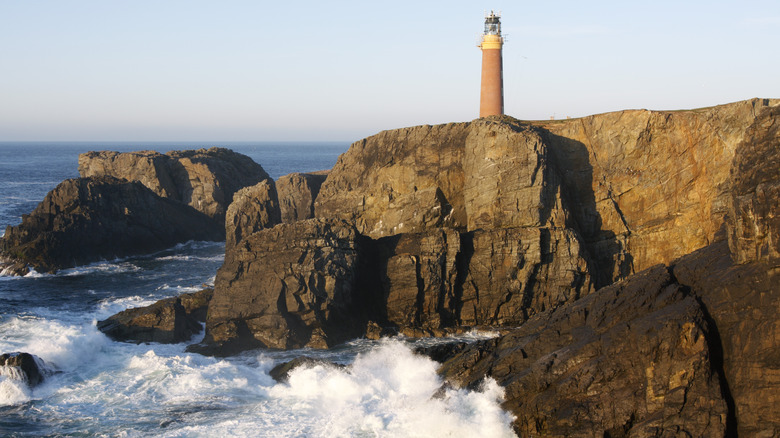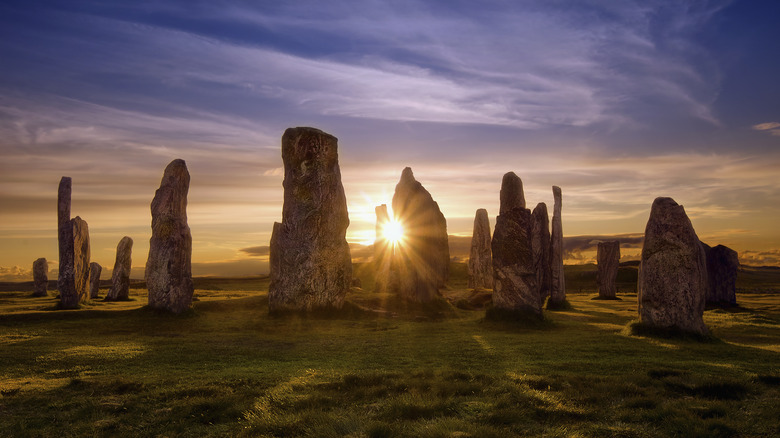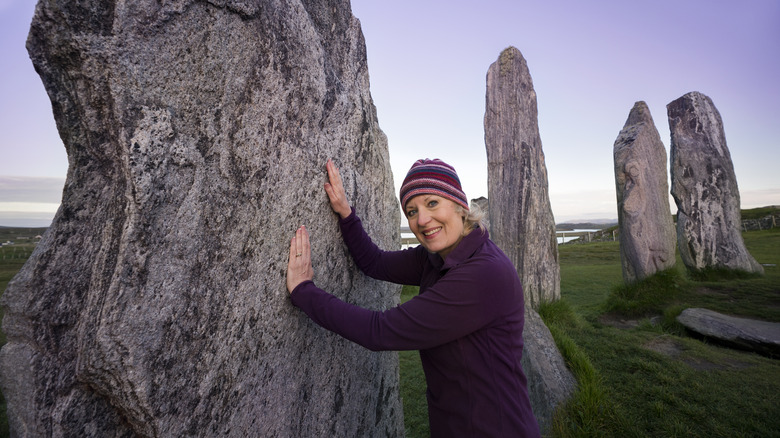Avoid Stonehenge Crowds At This Scottish Island With Some Of The World's Best Standing Stones
There are few world heritage sites more instantly recognizable than Stonehenge, the iconic stone circle that stands in the windy expanse of Salisbury Plain, Wiltshire, England. Unchanged for thousands of years, experts believe the monument must have been used for prehistoric rituals and astronomy, though debate still rages on exactly how such ancient people managed to build it — and why. Unsurprisingly, Stonehenge is now a major tourist destination, with visitors traveling to England from around the world to seek out the one-in-a-lifetime landmark for themselves. But how does it compare to other ancient monuments, such as Calanais, a mysterious stone circle found on the Isle of Lewis in Scotland's Outer Hebrides?
Some travelers have expressed their frustration with the commercialism of Stonehenge, which is often crowded, making it difficult to sense the mystery among the throngs of tourists who descend upon the ticketed site daily. And while Stonehenge is perhaps the world's best known example of the ancient monuments to be found in Britain, there are in fact countless more, the roots of which go back even farther into the past. Calanais is perhaps one of the finest specimens, with its beautiful, remote location making it a perfect stop for visitors to the U.K. looking to uncover the magic of the island nation's magical ancient history.
The history of Calanais Standing Stones
Experts believe that the mysterious Calanais Standing Stones were erected as early as B.C. 2900, during the Neolithic Period. As such, they likely predate much of Stonehenge itself, which was built slowly between B.C. 3000 and B.C. 1520.
The Calanais site was excavated between 1980 and 1986, a project which revealed to experts various details as to how they were built, and established its connection to other historical sites, including a second stone circle on the island of Orkney. However, as with Stonehenge, experts are still divided as to why Calanais was built, and what the intentions were behind it. Explanations remain beautifully speculative.
Excavator Patrick Ashmore, who investigated the site in the 1980s, has his own explanation. "Every 18.6 years, the moon skims especially low over the southern hills. It seems to dance along them, like a great god visiting the earth," he wrote. "Knowledge and prediction of this heavenly event gave earthly authority to those who watched the skies" (via Historic Environment Scotland).
Visiting Calanais Standing Stones
The village of Calanais is accessible by road, with visitors to the Isle of Lewis usually traveling by bus or car from Stornoway, the island's largest town which is about 30 minutes away. Stornoway is served by regular ferries from the mainland and other islands, though flights are also available to Stornoway from the Scottish cities of Edinburgh, Glasgow (which Rick Steves believes is the most underrated destination in Scotland), and Inverness. Cyclists looking to explore the rugged, unique landscape of Lewis can use the Hebridean Way cycle route, which also traverses the other islands of the Outer Hebrides (if you're a pedal-pusher, you must read our rundown of the world's top cycle routes). The Isle of Lewis offers a wide range of accommodation options, from vacation rentals in Stornoway to luxurious hotels and bed and breakfasts across the island.
An exhibition, "Story of the Stones," which outlines the history of the site and its excavation, is present in the Calanais visitor center (currently under redevelopment — get the latest updates from calanais.org), along with a souvenir store and food and restroom facilities. Entry to Calanais is free.


